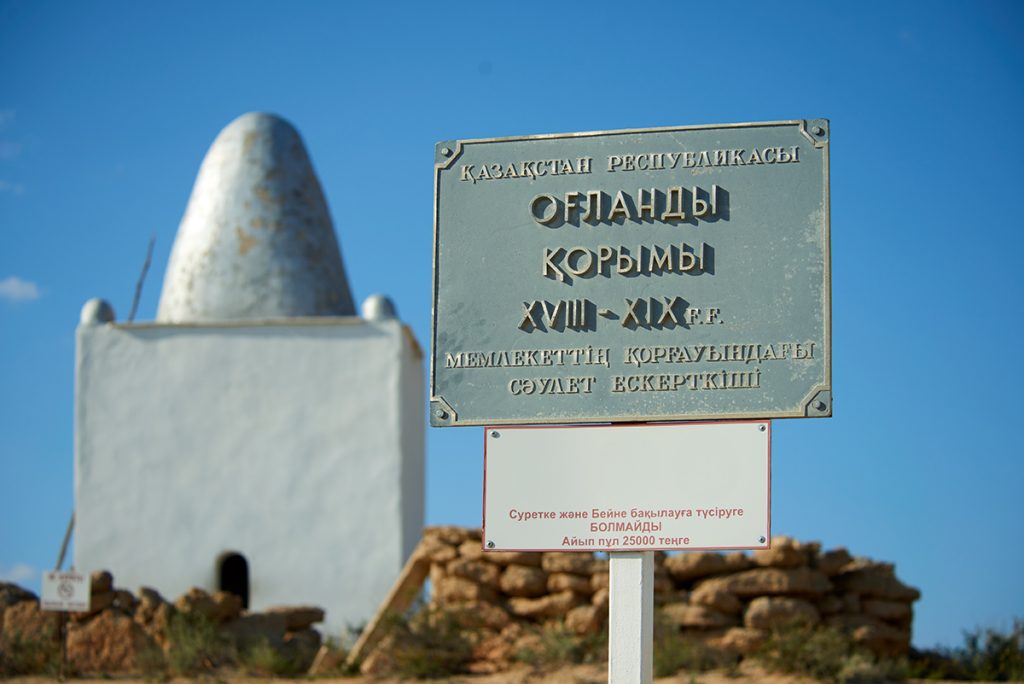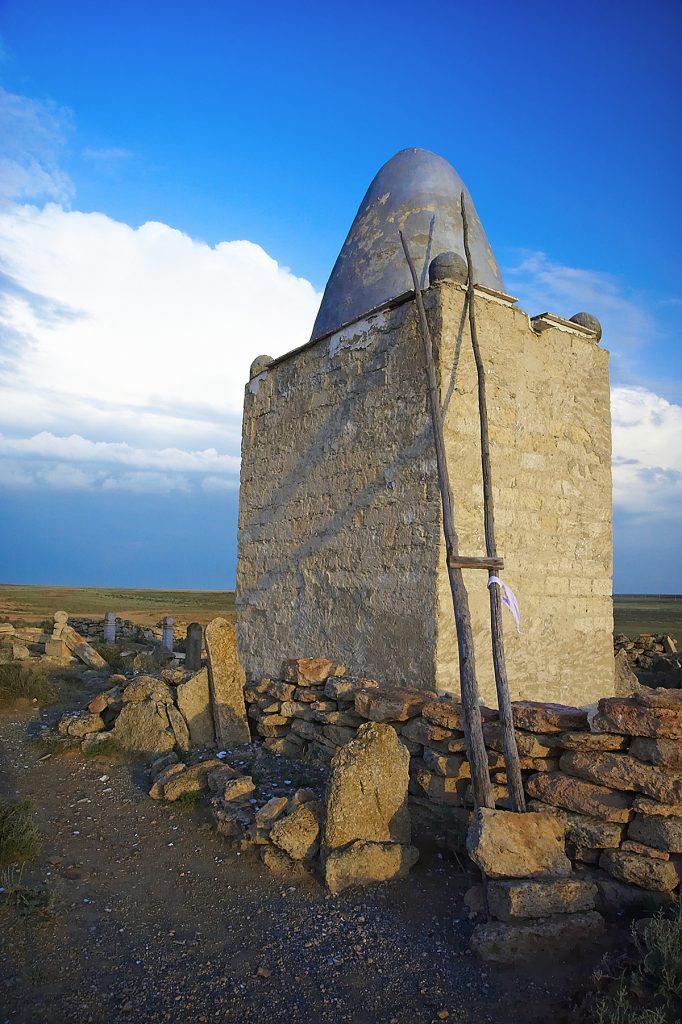Every element within the sacred steppe of Mangystau elicits interest in the chronicles of the region. Each mausoleum, every mosque, carries a captivating history that has fascinated many. The sacred sites of Mangystau, harmoniously intertwined with the unpredictable nature, imbue a distinctive essence into this vast region, meticulously preserving traditions and customs.

One such sacred and popular tourist destination is the burial site of Oglandy-ata. This architectural monument from the 18th-19th centuries is situated 95 kilometers northeast of the village of Senek, in the Karagyie district of the Mangistau region, within the town of Oglandy. In proximity to this location lies the renowned Beket-Ata mosque, adding to the sacred aura of the region.
Architecturally, the monument is characterized by its white color and a simple dome shape. The term «ogylan,» translated from Turkic, signifies «young man» or «child.» According to some reports, due to the nomadic lifestyle, numerous children perished at a certain period and were subsequently laid to rest in this area. Consequently, the land bearing the burials of these children came to be known as «Oglandy.» As the saying goes, Beket-ata himself decreed during his lifetime: «Let anyone wishing to come to me first visit Ogland, embark on a pilgrimage, and only then approach me.»

The poetess Fariza Ongarsynova also alludes in her works to the sacred nature of Oglandy-ata’s burial site, renowned among the people for its sanctity, calming ambiance, and enigmatic power that paves the way.
Presently, the burial place of Oglandy-ata is under state protection, preserving its historical and cultural significance.



